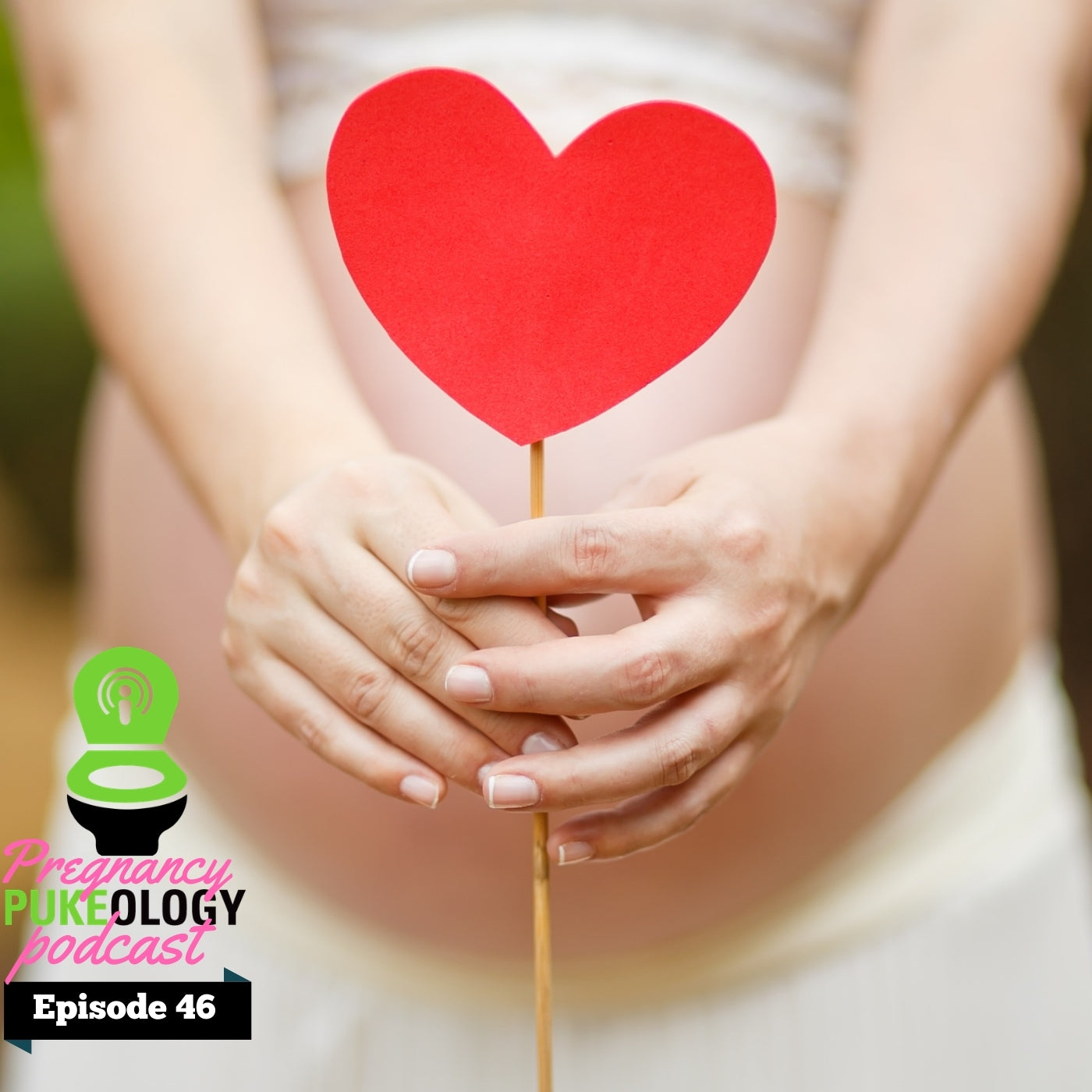
The Pregnancy Heart - Cardiovascular Changes During Pregnancy
Can you believe that your heart changes during pregnancy? And no I don’t mean that it gets bigger as you add a new member to your family. I mean your heart physiologically differs from the heart you once had before you got pregnant. Before I can break down the differences in the pregnancy heart, I need you to understand the physiology of the heart first. If it seems too science class like, just listen to Pregnancy Pukeology Podcast Episode 46 to get all the red juicy details.
Heart physiology
The major function of the heart is to pump blood into the cardiovascular system to provide an efficient blood flow throughout the body. The human heart is associated with two types of circulation:
- Systemic circulation
- Pulmonary circulation
Both systems carry blood along with Oxygen and Carbon dioxide. There are four Chambers of heart right and left atria and right and left ventricles. Blood flows through the heart in one direction that is, from Atria to the ventricle. There is no back flow of blood in the heart.

Right Atrium collects blood from vena cava (inferior and superior) and carries it into the right ventricle through a tricuspid valve. From the right ventricle, the blood is pushed into the Pulmonary artery to move into pulmonary circulation through semilunar valves where carbon dioxide is exchanged with oxygen that is being inhaled with every respiration and it all happens with a simple process called diffusion.
The left side of the heart receives oxygenated blood that is brought into the left Atrium through the Pulmonary vein and then it is pumped into the left ventricle through the Bicuspid valve and then to the Aorta for whole-body circulation through semilunar valves. Eventually, the oxygenated blood moves into every capillary where the exchange of tissue fluid and cells of the body happens to supply Oxygen and nutrients to the peripheral parts.
All mammals have the same heart physiology as that of humans. Other mammals include; monkeys, bears, camels, cows, whales, etc.
Cardiovascular Changes during Pregnancy
Heart rate depends on the amount of blood pumping by the heart into the body. Pregnancy female hard work harder because the fetus demands energy for growth. But for this heart has become more blood to the uterus. In the third trimester, The uterus receives one-fifth of body blood. During pregnancy pumping activity of the heart increases by 30 to 50%. Due to an increase in cardiac output. Pregnant females have more heart rate as compared to normal women. Later on, in the 7th month, there is a slight decrease in cardiac output. And eventually, after delivery, this cardiac output decreases rapidly first and then starts increasing gradually and it returns to the pregnancy level 6 weeks later after the delivery. On auscultation you can hear certain murmurs and irregularities in rhythm this is because the heart is working harder than usual. However other murmurs and irregularities require medical consultation.
Blood pressure usually decreases in the second trimester but returned to a normal level in the last trimester. There is a 50% increase in the volume of blood during pregnancy. Due to an increase in the volume of fluid in the blood rather than blood cells.This process is called hemodilution. Unknown reasons: the number of red blood cells also increases a little bit during pregnancy but these levels markedly increase during labor and few days in Postpartum state.
Abnormal Heartbeat in Pregnancy
Many different kinds of signs and symptoms appear related to the heart during pregnancy. However they are physiological and considered normal They can vary from fatigue, fainting shortness of breathing, chest pain, lack of sleep, palpitations, and even heart murmurs.
Heart murmurs usually occur due to an increased rate of blood flow to the heart throughout pregnancy. They can be because of an increased volume of blood that is flowing through the heart or are any underlying problems related to heart that may be a perfectly normal thing but you need to consult a doctor for expert opinion so that he can differentiate whether they are physiological or pathological murmurs.
Systolic murmurs occur during pregnancy. These murmurs are caused by an increase in the blood flow through the right and left ventricle. They can be 1 by 6 or 2 by 6 midsystolic murmurs that do not radiate anywhere. On auscultation, however diastolic Murmur is not very commonly found during pregnancy.
Women can have a healthy pregnancy even if they have murmurs. Heart murmur is just an added sound that can be heard during pregnancy and it is very common. This type of murmurs goes away by themselves after delivery.
Mood Swings in Pregnancy
The term a broken heart should have been coined during pregnancy. Emotions run very high during pregnancy due to a surge of hormones.
The constant swing of mood is a common phenomenon that most women have to face during pregnancy. If you are pregnant you probably experience some sort of mood swings many times. At times, you will feel yourself alone but in reality, you are not alone these mood swings are very common during pregnancy and most women experience it throughout. Sometimes you feel excited and sometimes you feel down in the dumps, especially when asking questions to yourself like; Will I be a good parent? Will I hold my child properly? Will I be a good mother? Will my baby be healthy?

Pregnancy is a life-changing event in which we have a lot of physical, emotional, and psychological changes these changes help you to have a positive or negative experience. These mood swings happen because of fatigue, stress, and changes in the level of metabolism due to altered levels of the hormone (estrogen and progesterone ) which affect the level of chemicals that are released from the brain and regulate the mood. Most of the mood swings are experienced in the first trimester between 6 to 10 weeks and then again in the last trimester when your body is preparing to deliver your baby.
So if your reading this in your first trimester you will quickly recognize that morning sickness isn't the only  joyful side effect of growing a beautiful baby, but you don't have to give up your cookies. Luckily NoMo Nausea was invented. A pregnancy safe alternative for morning sickness that works in seconds by combining 3 of the most powerful natural remedies for nausea: pressure point therapy, essential oils, and distraction technology all on your wrist.
joyful side effect of growing a beautiful baby, but you don't have to give up your cookies. Luckily NoMo Nausea was invented. A pregnancy safe alternative for morning sickness that works in seconds by combining 3 of the most powerful natural remedies for nausea: pressure point therapy, essential oils, and distraction technology all on your wrist.

How to Help Mood Swings during Pregnancy
Treatment for these mood swings is that you have to accept that all these experiences are normal and you are not the only one who is experiencing them. Besides this, you have to follow certain instruction:
- Drink plenty of water
- Have a sufficient sleep
- Relax during daytime
- Keep yourself busy in physical activities
- Eat well
- Fun time with activities love
- Try some exercises
- Get a prenatal massage from the spa

If your mood swings are constant and they are not getting better then you need to seek attention from your doctor.
